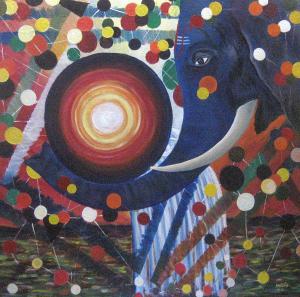There are many ways to answer the question — what is Mahabharata? This is often the case with ancient epics, as there are several ways to interpret them. Mahabharata, being the longest of them all (it is ten times Iliad and Odyssey put together), tells the tale of a political struggle between two groups of cousins which eventually results in a war. But it would be unfair to say that it is just that.
First, let’s take a broader look at Hindu philosophy, which will help us gain better understanding of it. We begin with the idea of Dharma, which is not only central to Hinduism but many other ‘Dharmic’ traditions that originated in India such as Buddhism, Jainism, etc.
What is Dharma?
It would be helpful to first clarify what Dharma is not. Dharma is not religion. Although the two terms are often used interchangeably, yet, there is a considerable difference. While Religion is a set of beliefs, Dharma exists inspite of its believers — and it exists on multiple levels. Just like there are different laws (natural laws of physics, man-made laws of society, etc), Dharma, too, can be interpreted in the same spirit. And once we talk about interpretation, we get to the idea of Religion.
Religion, in some ways, is an interpretation of Dharma. For instance, Buddhism interprets the reality of universe in a different way than Christianity. Both can find certain common grounds, but the quest will go on forever, to discover the truth. Or Dharma, in other words.
Dharma’s concept can be applicable to almost everything around us. How does the moon rotate around Earth? Based on its Dharma. How does fire create smoke? That is fire’s Dharma. The interesting turn comes when we turn from ‘is’ to ‘ought’. How should a ruler govern the state? The answer, once again, is the same: by following his Dharma. How should a friend behave? By following the friendship Dharma? Now, the question arises: what are all these Dharmas and where do we find them? The answer is there in Mahabharata.
What is Mahabharata?
Now, we return to the original question. What is Mahabharata?
Whatever is here, may be found elsewhere; what is not cannot be found anywhere else.
Mahabharata (18:56-33)
Mahabharata uses the power of narrative to teach Dharma. There were, of course, different methods used by ancient Indians to achieve the same objective. Vedas do it through rituals and prayers, Upanishads do it through philosophy, and Mahabharata (and Puranas) do it through stories. And they are interconnected. Think of it this way. If Vedas were seeds then the fruit that you get out of it is Mahabharata, which, by the way, contains another seed called Bhagavad Gita.
Therefore, on one level, Mahabharata is a narrative poem which contains some of the most beautiful stories that you will ever come across. However, on a deeper level, it contains the philosophy of Dharma, presented to you in the most palatable form, i.e., storytelling.

